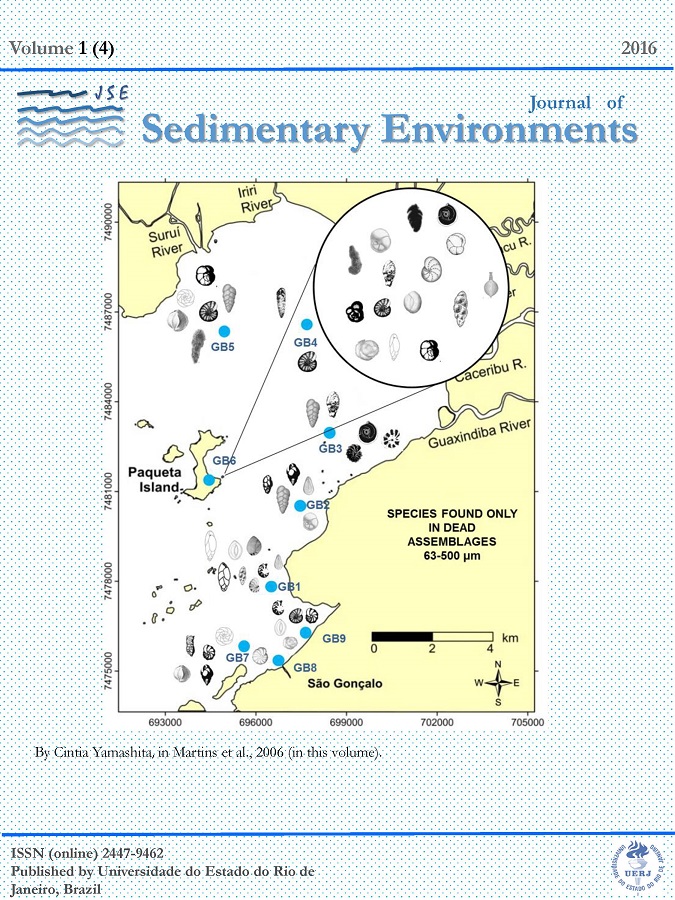SIMILARITY BETWEEN THE DEAD AND LIVING FORAMINIFERAL ASSEMBLAGES IN THE NE SECTOR OF GUANABARA BAY (BRAZIL)
DOI:
https://doi.org/10.12957/jse.2016.26875Schlagworte:
living and dead foraminifera, l different sediment fractions, taphonomic effects, environmental assessment, coastal system, Guanabara BayAbstract
Guanabara Bay (GB), located at the coast of Rio de Janeiro State (Brazil), is an ecosystem rich in biodiversity both in terms of mega, macro and microfauna. However, the factors that control their distribution are still poorly understood. This work intends to identify the possible factors affecting the distribution of benthic foraminifera in the bay by comparing living and dead assemblages in selected sediment fractions. Substantial differences in terms of density, diversity and equitability of the species in the living and dead assemblages and in different sediment fractions (63-150 μm, 150-250 μm, 250-500 μm) are identified. Lower similarity (<70%) between the living and dead assemblages are associated with areas impacted by organic matter and may be mainly ascribed to either loss of tests due to dissolution, currents remobilization and abrasion, or inclusion of allochthonous species transported by currents. This work suggests that the use of the living plus dead assemblages or dead assemblages can reduce the accuracy of the results if the work intends to evaluate the environmental conditions.
Downloads
Veröffentlicht
Ausgabe
Rubrik
Lizenz

Journal of Sedimentary Environments (JSE) is licensed under a Creative Commons Attribution-Noncommercial-Share Alike 4.0 International License.

